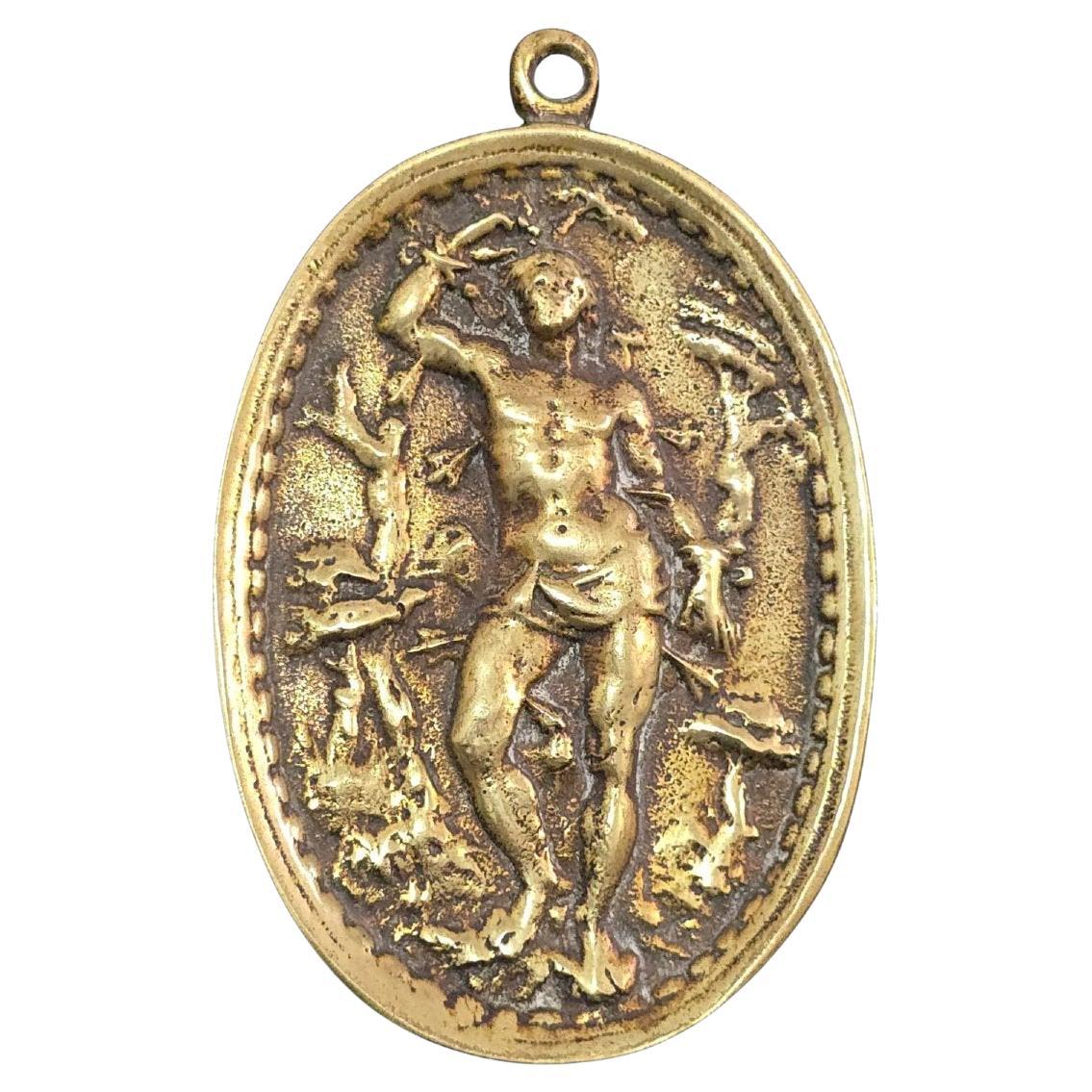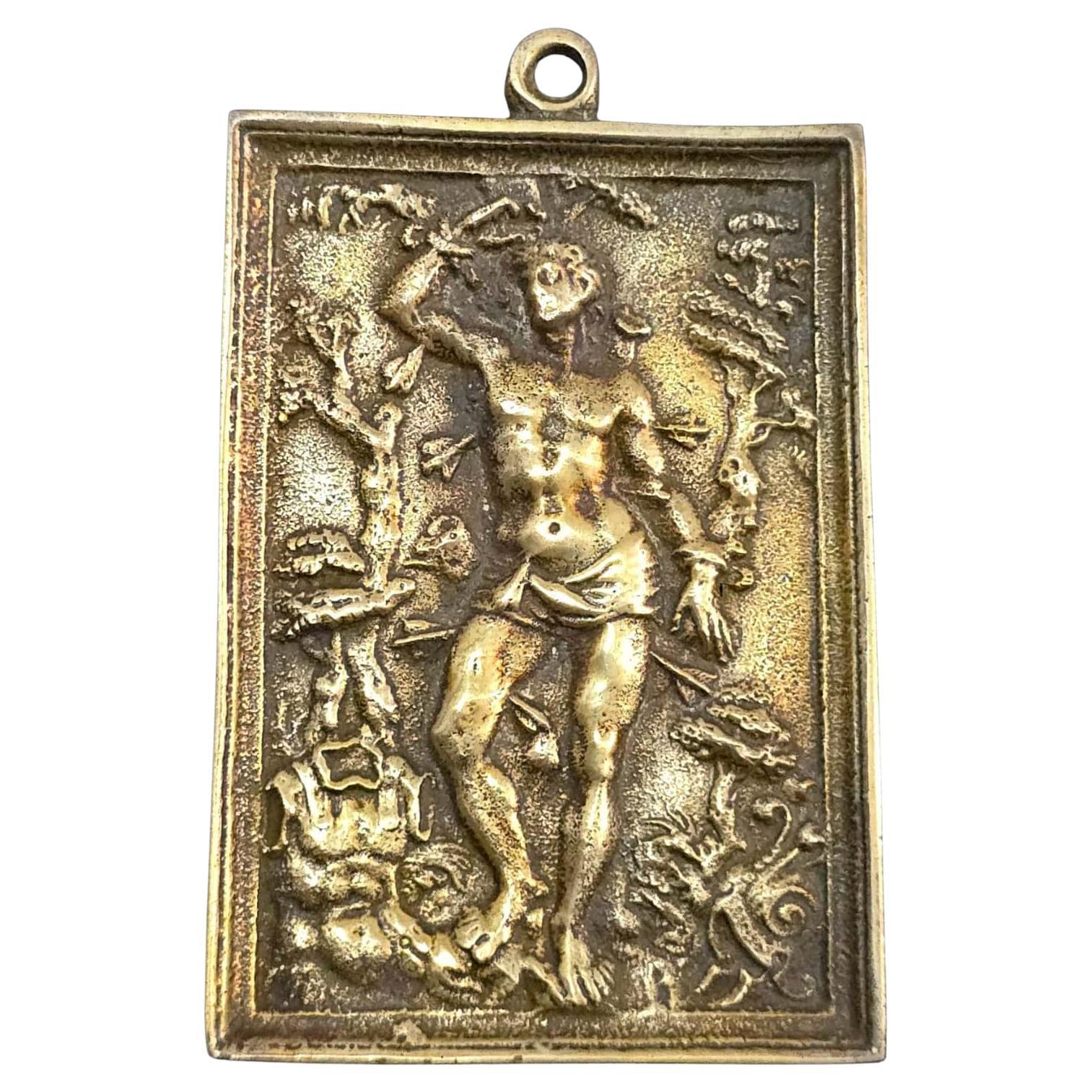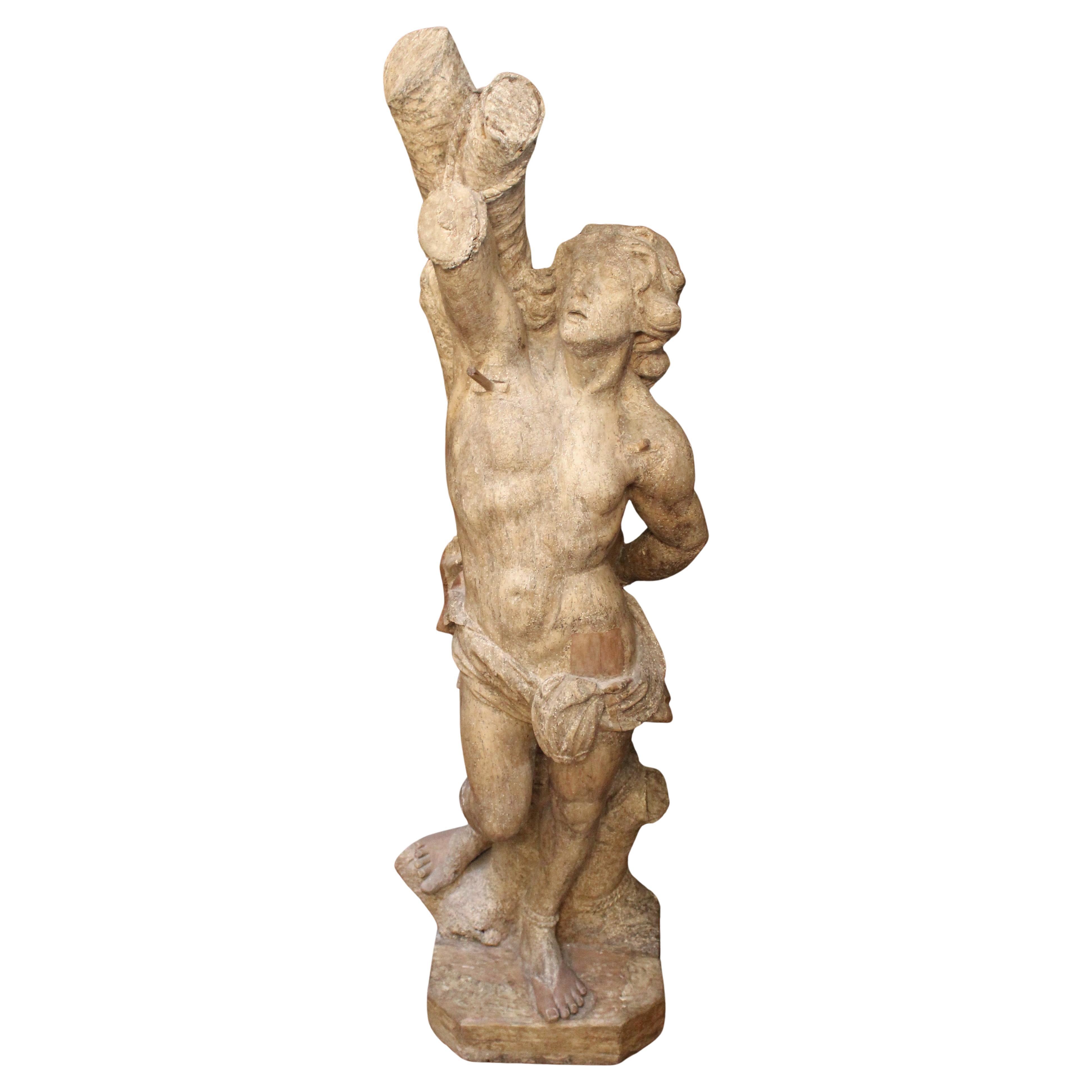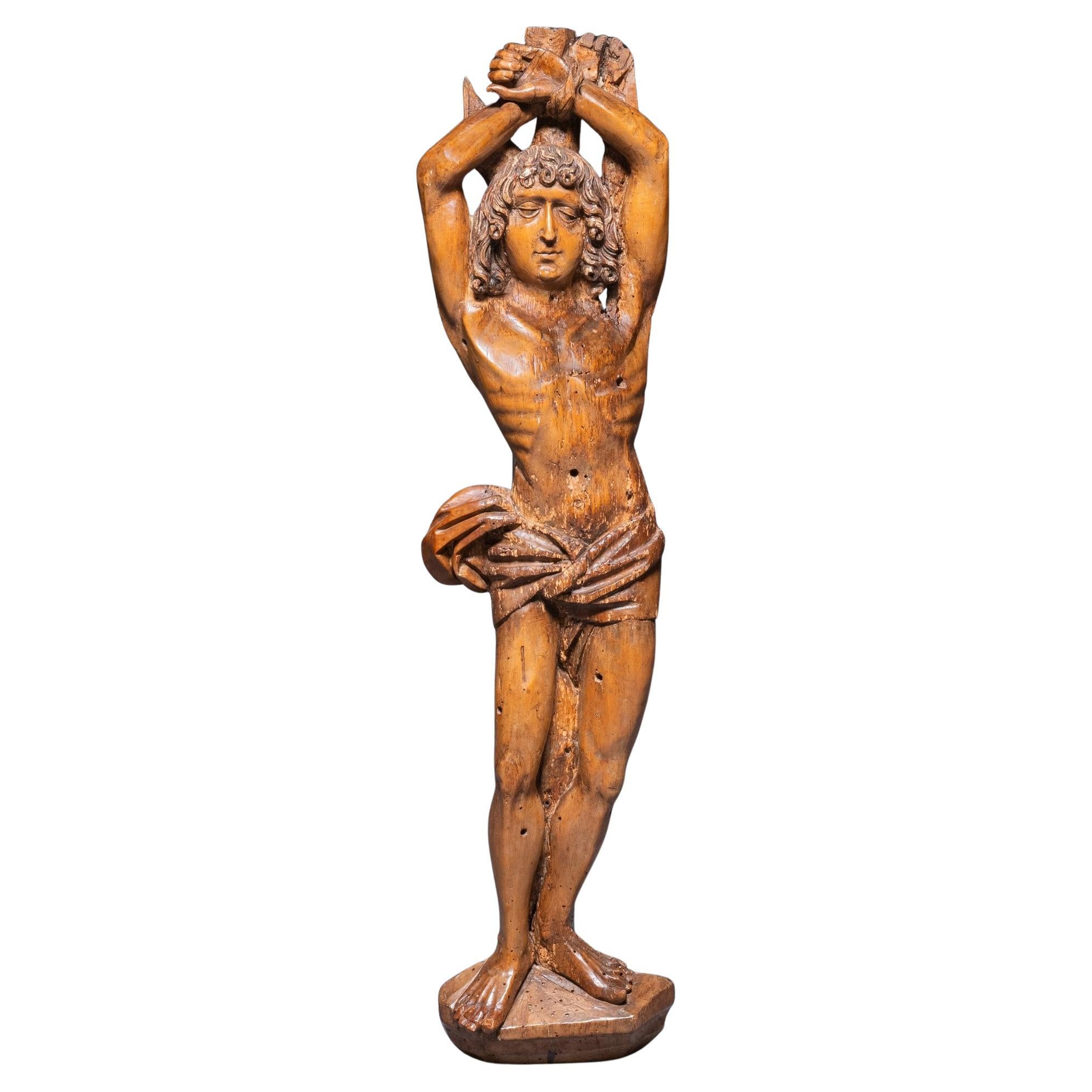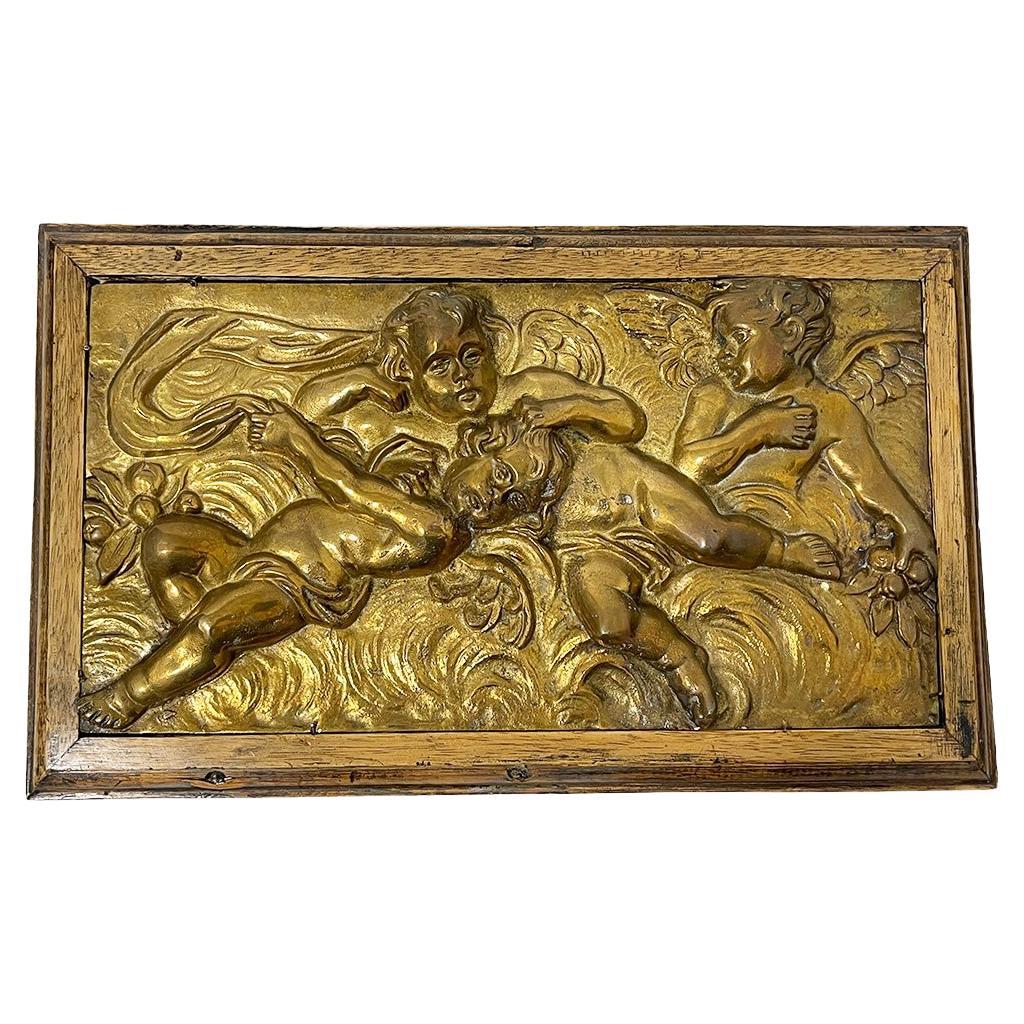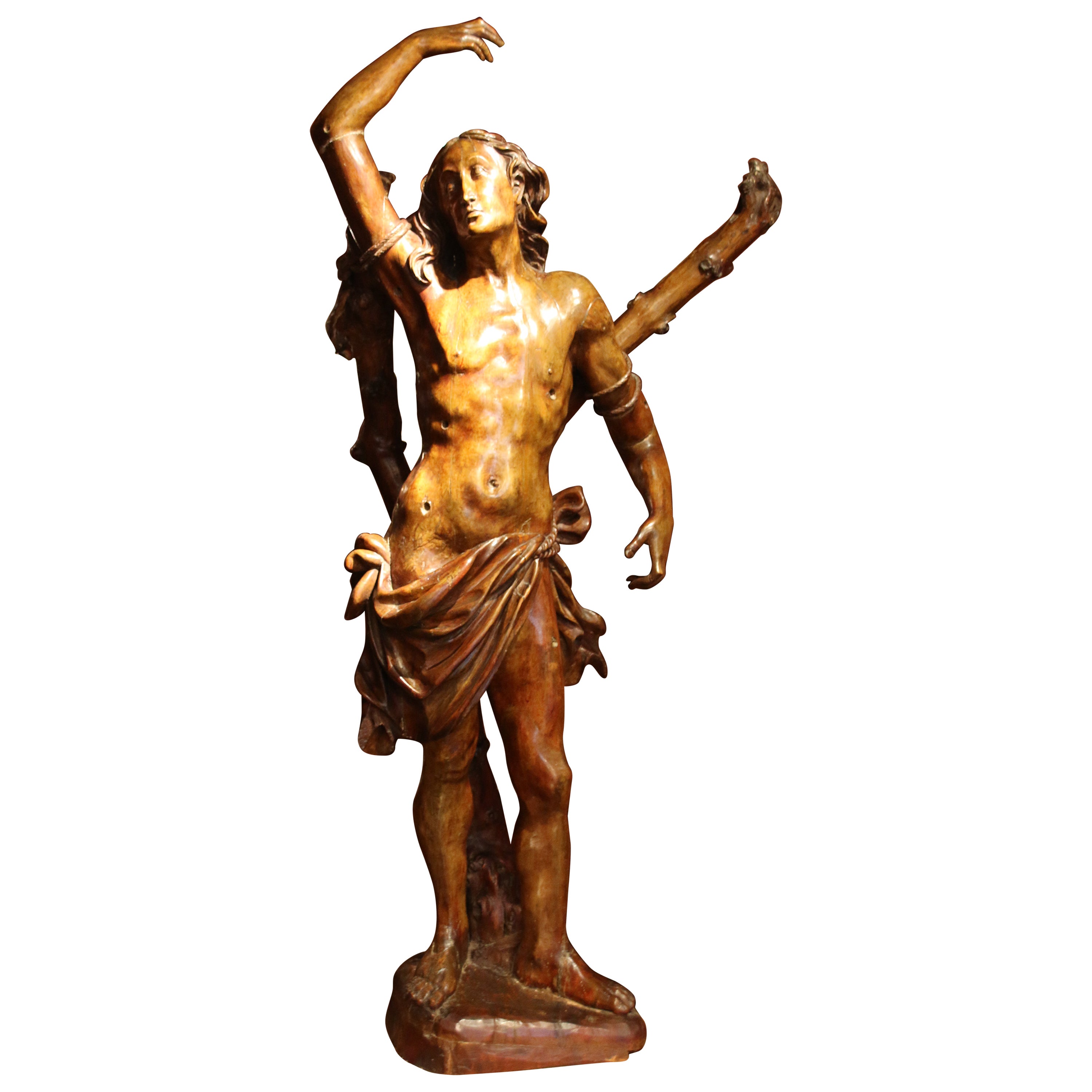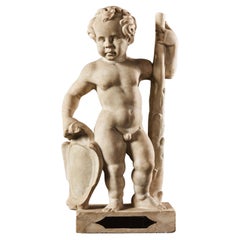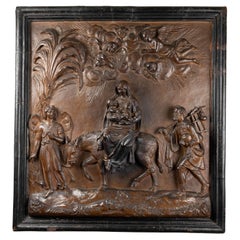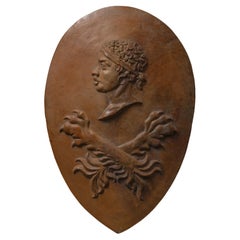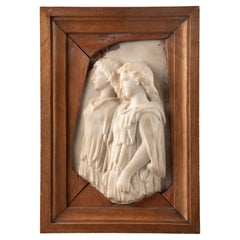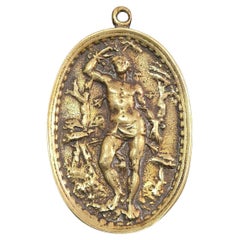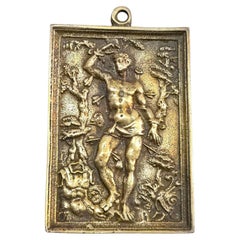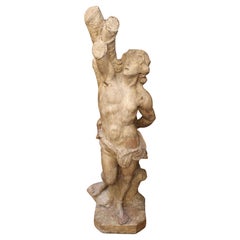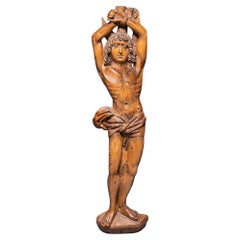Items Similar to Large Cast and Chiseled Bronze Plaque - Saint Sebastian, Rome 17th century
Want more images or videos?
Request additional images or videos from the seller
1 of 5
Large Cast and Chiseled Bronze Plaque - Saint Sebastian, Rome 17th century
$13,215.67
£9,677.92
€11,000
CA$17,989.83
A$20,164.29
CHF 10,498.95
MX$246,214.58
NOK 133,298.56
SEK 126,355.04
DKK 83,713.35
Shipping
Retrieving quote...The 1stDibs Promise:
Authenticity Guarantee,
Money-Back Guarantee,
24-Hour Cancellation
About the Item
Large Cast and Chiseled Bronze Plaque
Saint Sebastian after the model by Guido Reni (Capitoline Museum)
Rome, 17th century
Large rectangular bronze plaque depicting the martyrdom of Saint Sebastian within a quadrilobe frame. The background of the plaque is adorned with relief flowers, garlands, and torches in the ancient style.
Inspired by the famous martyrdom of Saint Sebastian by Guido Reni, preserved in the Capitoline Museum in Rome, the nimbed saint appears with his wrists tied above his head to a tree trunk, covered with drapery around his loins; his face slightly tilted towards his shoulder, eyes to the sky.
The shots have begun and his young flesh is pierced by three arrows: one on the left, on his right side, at the level of the ribs, one below the left armpit, piercing his lung; an additional arrow pierces the abdomen of the Saint, just below the navel (as in the Capitoline version).
The ambiguous attitude of the martyr is confusing. Pierced by arrows, he does not seem to be in a state of suffering. With his mouth slightly open and his gaze turned towards the sky, he seems to almost betray a moment of pure ecstasy.
Guido Reni painted the Saint as a martyr seven times.
As in our plaque, the Saint Sebastian of Genoa (and the one almost identical with a few details from the Capitoline Museum) presents a tight framing at the level of the torso of the youth, who has his hands tied above his head, which forces the saint into some contortions of the spine: the thorax is then projected forward, and the back shows a delicate curvature. The extension of his body highlights, under a smooth modeling, the muscles of the arms and torso as well as the ribs. The perizonium seems to slide along the hips, ready to unravel or fall to the ground.
A religious subject, it takes on secular dimensions. Nudity, with its dual dimension of eroticism and Beauty, reinvigorates the gaze.
Perpetuating the cult of beauty and grace despite the violence of the subject, the scene, devoid of vulgarity, is imbued with poetry and gentleness. The elegant figure of the Saint with pure lines conforms to a classical ideal canon (almost childlike face, curly hair, displayed sensuality).
Enlisted in Rome at the end of the 3rd century, Sebastian, captain of the Praetorian Guard of Emperor Diocletian, protected persecuted Christians. He was then tied to a pole and pierced with arrows from which he miraculously recovered. He returned to the imperial palace and reproached Diocletian for his attitude towards Christians. He was then beaten with rods and his body was thrown into the sewers so as not to be venerated by Christians. The account of his martyrdom made him one of the patron saints of the early Christian churches. He is also considered the patron saint of soldiers in general but is primarily the saint protector against the plague and more broadly the protector against epidemics.
Plaques were among the objects often found in the environment of the studiolo and the cabinet of curiosities, alongside other small forms such as classical coins and engraved gems. The artists who created them were generally bronze sculptors, also creating small figurines and objects such as inkwells, or goldsmiths, who often worked in the related field of engraving. They were relatively inexpensive and portable, and quickly spread widely in Europe, offering artists the opportunity to showcase their virtuosity and sophistication, and to promote themselves beyond their own city.
Plaques, like prints, played an important role in the dissemination of styles and trends in iconography, especially for classical subjects. Some drawings for plaque models have survived; others copied prints, book illustrations, and designs in other media, including engraved gems and classical sculptures.
- Dimensions:Height: 10.95 in (27.8 cm)Width: 7.09 in (18 cm)Depth: 0.12 in (3 mm)
- Style:Baroque (Of the Period)
- Materials and Techniques:Bronze,Cast
- Place of Origin:
- Period:
- Date of Manufacture:17th century
- Condition:Wear consistent with age and use.
- Seller Location:Bruxelles, BE
- Reference Number:1stDibs: LU6666239255502
About the Seller
5.0
Vetted Professional Seller
Every seller passes strict standards for authenticity and reliability
1stDibs seller since 2022
15 sales on 1stDibs
Typical response time: 2 hours
- ShippingRetrieving quote...Shipping from: Bruxelles, Belgium
- Return Policy
Authenticity Guarantee
In the unlikely event there’s an issue with an item’s authenticity, contact us within 1 year for a full refund. DetailsMoney-Back Guarantee
If your item is not as described, is damaged in transit, or does not arrive, contact us within 7 days for a full refund. Details24-Hour Cancellation
You have a 24-hour grace period in which to reconsider your purchase, with no questions asked.Vetted Professional Sellers
Our world-class sellers must adhere to strict standards for service and quality, maintaining the integrity of our listings.Price-Match Guarantee
If you find that a seller listed the same item for a lower price elsewhere, we’ll match it.Trusted Global Delivery
Our best-in-class carrier network provides specialized shipping options worldwide, including custom delivery.More From This Seller
View AllHercules Holding a Coat of Arms, Flemish, XVII Century
Located in Bruxelles, BE
Hercules holding a coat of arms
Flemish, XVII century
White and black marble
Measures: 67 x 32 x 19 cm
Hercules is depicted naked, holding a coat of arms with the right hand an...
Category
Antique 17th Century Belgian Renaissance Figurative Sculptures
Materials
Marble, Belgian Black Marble
$13,455 Sale Price
20% Off
Large Terracotta Relief - Lombardy, First Half of 17th Century
Located in Bruxelles, BE
Large Terracotta relief of the flight into Egypt
Lombardy, first half of 17th century
Painted terracotta
91 x 85 x 11,5 cm
This event in the early life of Christ is recounted i...
Category
Antique 17th Century Italian Baroque Figurative Sculptures
Materials
Terracotta
$62,474 Sale Price
20% Off
Tuscan Coat of Arms
Located in Bruxelles, BE
Tuscan Coat of Arm in terra-cotta signed "A. Salvietti 187x"
Signed and Dated "A. Salvetti 187x"
73 x 48 cm
Antonio Salvietti (1854-1931) was an Italian architect and painter.
He w...
Category
Antique 19th Century Italian Beaux Arts Wall-mounted Sculptures
Materials
Terracotta
$6,848
Renaissance relief - Italy, probably Rome, 16th century
Located in Bruxelles, BE
Renaissance relief depicting two female figures dressed in a chiton
Italy, probably Rome, 16th century
Marble, wooden frame (provenance label on the back)
28 x 20 x 5 cm
This beau...
Category
Antique 16th Century Italian Renaissance Wall-mounted Sculptures
Materials
Marble
Christ - Umbria, second half of the 15th century
Located in Bruxelles, BE
Christ
Umbria, Orvieto?
Second half of the 15th century
77 x 16.5 cm
Category
Antique 15th Century and Earlier Italian Renaissance Figurative Sculptures
Materials
Walnut
Bacchus - Southern Italy, late 17th century
Located in Bruxelles, BE
Bacchus
Southern Italy, late 17th century
Alabaster Sculpture
H: 20 cm
A finely carved 17th-century alabaster sculpture of a naked Bacchus. This Italian alabaster figure depicts ...
Category
Antique 17th Century Italian Baroque Figurative Sculptures
Materials
Alabaster
You May Also Like
Gilt Bronze Plaque of Saint Sebastian — 17th Century
Located in Madrid, ES
Gilt Bronze Plaque of Saint Sebastian — 17th Century
Exceptional gilt bronze devotional plaque, made in Spain according to 17th-century principles. This type of object, of intimate ...
Category
Antique 17th Century Spanish Baroque Religious Items
Materials
Bronze
Gilt Bronze Plaque of Saint Sebastian — 17th Century
Located in Madrid, ES
Gilt Bronze Devotional Plaque of Saint Sebastian — Spanish, Early 17th Century
An exceptional gilt bronze devotional plaque depicting Saint Sebastian, created in Spain during the ea...
Category
Antique 17th Century Baroque Religious Items
Materials
Bronze
Later 17th Century Spanish Wood Sculpture of St. Sebastian
Located in Chapel Hill, NC
Later 17th century wood sculpture of St. Sebastian, Spanish. An extraordinarily moving piece of Spanish Baroque sculpture. Only the gesso traces remain of the original highly painted...
Category
Antique Late 17th Century Spanish Baroque Figurative Sculptures
Materials
Wood
Large 16th Century German Carved Basswood Saint Sebastian Sculpture
Located in London, GB
Antique Saint Sebastian Sculpture, Antique Saint Sebastian Statue, Antique Religious Sculpture, Religious Antique Sculpture, Antique Religious C...
Category
Antique 15th Century and Earlier German Renaissance Figurative Sculptures
Materials
Wood
19th Century Italian Bronze Plaque with Putti
Located in Delft, NL
19th century Italian bronze plaque with Putti
In bas-relief bronze plaque in oak wooden frame with scene of 3 reclining putti with fruit and ...
Category
Antique Late 19th Century Italian Wall-mounted Sculptures
Materials
Bronze
Carved Wood Saint Sebastien, Southern Germany, c. 1510-1520
Located in Saint-Ouen, FR
Carved wood Saint Sebastian
Origin : Southern Germany
Period : c. 1510-1520
Measures: Height : 146 cm
Width : 67 cm
Depth : 30 cm
Walnut
Good condition
According to Jocobus de Varagine’s Golden Legend Sebastian was born in Narbonne where he was promoted head of the first cohort by emperors Maximian and Diocletian who were fond of him. One day as Marcellin and Marc were condemned because of their Christian faith Sebastian urged them to not give away. He would then convert many Roman soldiers before being reported to Diocletian. The emperor had him tied against a post in a middle of the Field of Mars and pierced by the soldiers’ arrows. Sebastian did not die and recovered thanks to Irene’s good care. Once he had recovered from his injuries he went to the palace to critized the emperor’s attitude towards Christians. Sebastian was beaten to death.
Following the common iconography Saint Sebastian is here depicted leaning against crooked tree with his arms tied with ropes.
His peaceful face presents a straight nose and small lips framed by his hair locks. His head turned to the right side is slighlty tilted backwards as if he was gazing at the sky.
Saint Sebastian body’s is gracefully presented in contrapposto. Almost completely naked a single piece of draped cloth is tied on his right hip and fall over his left knee. The carved folds give the fabric the realness of a heavy cloth.
The arrows wounds are still visible. The saint’s anatomy with its bulging muscles and protruding ribs illustrate the sculptor’s skills. The right arm’s movement enlivens the sculpture.
The artist who authored this sculpture knew how to breathe grace and life to his work through the expression of the saint’s face...
Category
Antique 16th Century Figurative Sculptures
Materials
Wood
